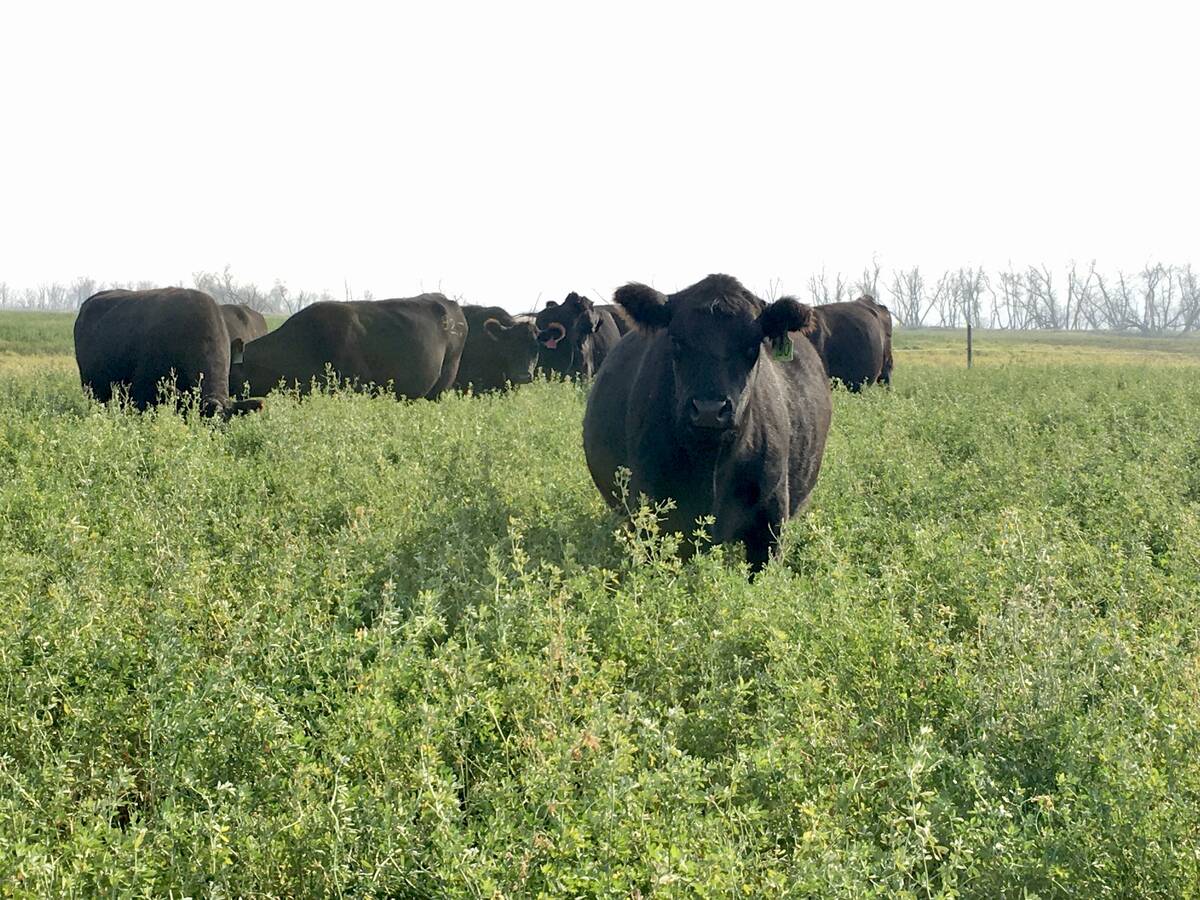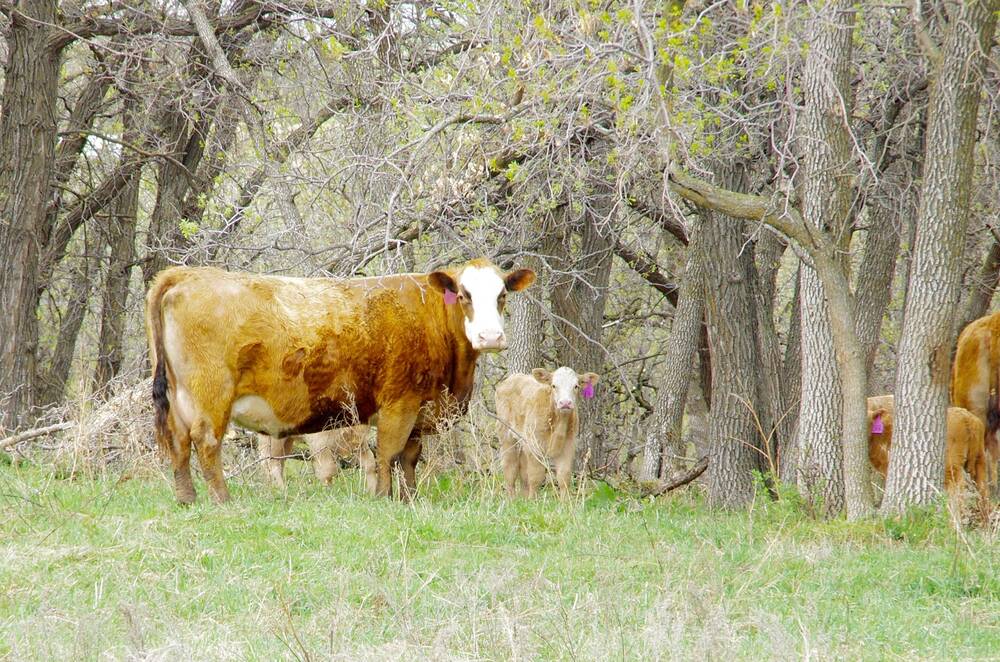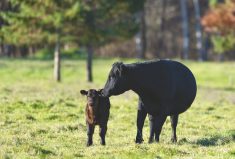Most Canadian cattle producers pregnancy-check their cows and heifers.
According to the 2022-23 Canadian Cow-Calf Survey, 64 per cent preg-check their cows and 68 per cent do the same for heifers. That leaves more than 30 per cent who don’t check and there are several reasons why they should, says a veterinarian from Fairview, Alta.
The most obvious reason is determining which cows are pregnant and which are open so the producer knows which ones to sell, wrote Will Lillico with the Fairview Vet Clinic in an email. But there are other herd management benefits from preg-checking.
Read Also

ABP opens up about leaving CCA
Alberta Beef Producers is leaving the Canadian Cattle Association due to concerns about fiscal transparency and governance, ABP officials say.
”It is a major cost having to feed open cows through the winter,” he wrote. “Winter feeding is the highest input cost in beef production. Depending on when we preg-check, we can also pick out which cattle caught earlier and which cows caught later. This allows us to select for better fertility in the herd.
“Another important reason is finding more open cows than normal. Nobody wants this to happen but in this case, the client and vet can discuss possible reasons for this higher open rate,” such as infectious disease, bull performance or nutrition.
Producers can also tackle other animal health tasks at the same time, especially when winter’s coming.
“While preg-checking, we can be looking at the individual health of each animal and body condition score (BCS),” wrote Lillico.
“This is a good opportunity to get our eyes on the cows and ensure they are healthy leading into the winter. BCS leading into the winter is important because, depending on condition, we can plan for winter feeding and if we need to make any changes to the ration to set the cows up for a more successful winter and calving season.”
Producers who have hired a veterinarian for preg-checking may want to take advantage of the time to discuss renewal of regulatory documents such as the veterinarian-client-patient relationship. This is a requirement among all producers because they give vets the ability to prescribe and dispense pharmaceuticals, said Lillico.
“This needs to be updated annually and preg-checking is a convenient time for both vet and producer to talk about the herd, protocols and management of the operation.”
Which test is best?
Beef producers have a few options when it comes to preg-testing method. In addition to standard manual palpation, there are ultrasounds and blood tests. Is there a best method? It depends on the producer and the situation, said Lillico.
“Most producers just want to know pregnant versus not. There is not necessarily a best way. It depends on the client’s goals, management, market and feed prices.”
That said, ultrasound has a number of advantages, said Lillico, including “safety of the vet, speed, being able to determine stage of pregnancy, sexing the fetus, just to name a few. This is how most preg-checking is done now.”
Manual palpation is reliable and accurate with practice, he said, but it can be physically hard on the vet. Blood tests are highly accurate and can detect pregnancy as early as 28 days. They are also convenient, allowing farmers to draw blood.
“It can be better for producers a long ways away from a vet clinic or (for those with) smaller herds,” said Lillico. “Disadvantages are waiting for results that can take up to three days, and blood tests cannot stage pregnancy.”
Trace mineral factors
There is rising concern about trace mineral deficiencies in Canadian cattle. Cheryl Waldner with the Western College of Veterinary Medicine in Saskatoon has data from 2019 showing 64 per cent of mature beef cows in Western Canada and 59 per cent in Eastern Canada have less than adequate copper.
Many trace minerals, including copper and zinc, are essential for pregnancy and insufficient amounts increase the risk of open cows. Lillico prefers to conduct a trace mineral test only if there are signs of an issue.
“Trace minerals are important for all kinds of different processes in the body,” he said. “Common manifestations of potential trace mineral deficiencies are low conception rate, poor hair coats, poor performance or late term abortions.
“As long as a producer provides a good quality mineral supplement with adequate amounts of trace minerals, levels in the herd should not be an issue.”
If a potential deficiency is detected, the first step is a blood test. The next step includes liver biopsies, which can determine precise trace mineral levels. This can be used to determine the need for supplements, he said.
“I would recommend testing at preg-checking in the fall if we do, as the cows are already in and this gives us the chance to plan for a trace mineral supplement before heading into calving season.”
A few recommendations
When it comes to preg-checking cows and heifers, Lillico recommends having a proper set-up for moving and handling cattle.
“Having a good handling system and chute will make the whole process much smoother, not to mention much safer for everyone involved.”
Second, get help.
“This can certainly make a big difference when you have some good people helping out when we preg-check.”
Finally, he encourages producers to tighten their breeding seasons to create calving uniformity and check cows for fertility.
“A cow’s estrus cycle is 21 days on average. Many producers will leave the bulls in for 45 days (two cycles) or 60 days (three cycles). This will really help tighten up calving as well and select the herd for the most fertile cows.”
















